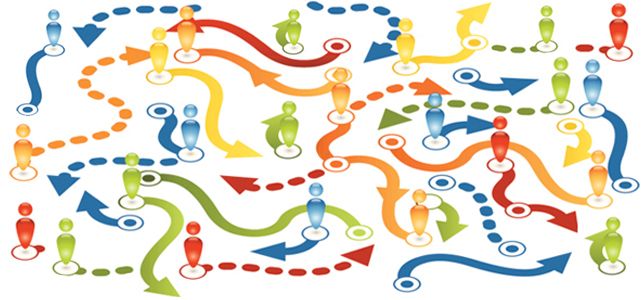Many organizations now rely on Social Network Analysis to help pinpoint their best and brightest. More widely known for its use by law enforcement in counter-intelligence activities for its ability to map covert organizations to organized crime or street gangs, Social Network Analysis now has the attention of business leaders. And, for good reason. Through careful analysis, this process allows companies to map and measure the relationships and flows between their employees, organizations, websites, social communities, and other knowledge entities.
Savvy leaders have found that Social Network Analysis, a study of social networks, can help to glean information about how employees work, gain insight into their personalities and behaviors, and develop an action plan for their advancement based on that insight. In some situations, a company may simply want to understand how people interact and ensure they support those interactions by aligning technology and processes. In other situations, a company may create an intervention plan to change certain behaviors after it has had a chance to evaluate the current state of the social network in specific departments or in the overall organization.
At TeleTech, the Social Enterprise team offers our clients a Social Network Analysis survey, which reveals the social fabric of their own organizations and helps to identify the people who are the key to moving their companies forward. According to Gartner, those experts fall into three main categories:
- Central connectors are people who exert significant influence over the network. In his book, The Tipping Point, Malcolm Gladwell describes connectors as those people who know many worlds and can link people to networks they did not know existed. In many cases, they are the “go to” people, but they also might be a bottleneck in the information dissemination process if they hoard knowledge. However, according to Gartner, they can also play a key role in a project if motivated properly.
- Brokers, or knowledge brokers, are the people who connect disparate groups. They are often a source of innovation since they serve as a connector to other people with whom certain clusters typically don’t interact. They seek out knowledge and are active in the elicitation, organization, and dissemination of knowledge. They spread relevant best practices and help to break down silos in the organization.
- Peripheral players are people who have few interactions with the rest of the network. In some cases, they may even be outliers with no regular contact to others in the cluster. However, peripheral players may have connections outside of the organization's network and, therefore, be an additional source of new insight for the team.
After conducting a Social Network Analysis and identifying their key connectors, knowledge brokers, and peripheral players, companies can then map them to processes and technology that aligns with their customer-centric goals and imperatives.
A company’s success in this ever-changing business environment with rapidly evolving technologies, tighter regulations, and sophisticated competition depends on having this ability to align people with processes and goals. Only then will a company’s ability to transform its culture to a customer-centric one become a realization.







